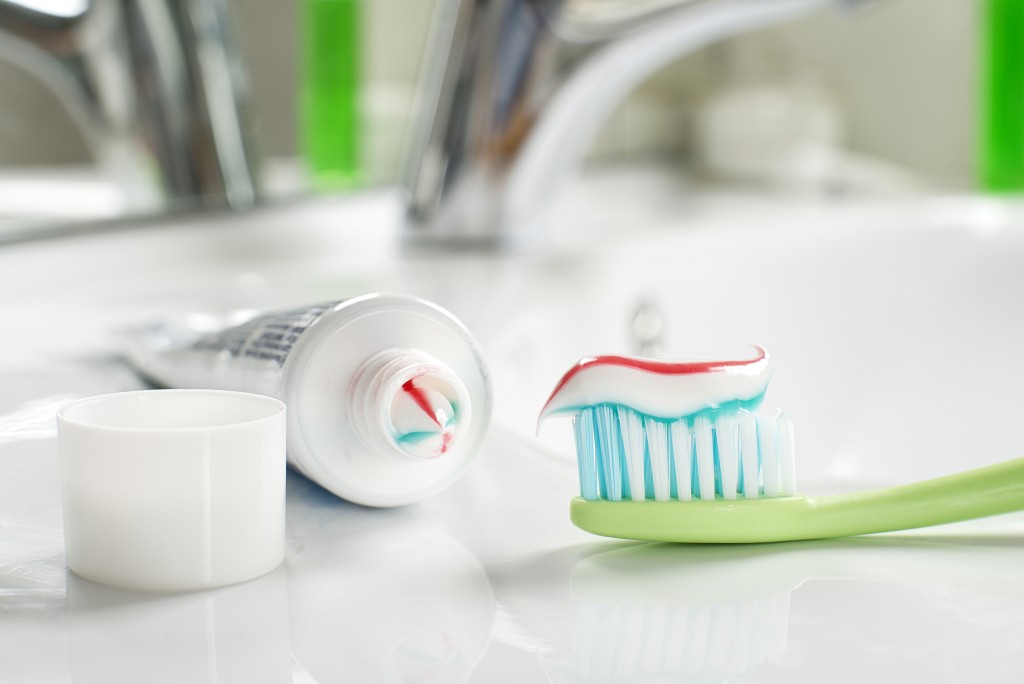Did you ever stop to think about what’s in toothpaste before you start scrubbing it all over your teeth? It’s not a usual question posed by patients undergoing dental cleaning here in Taylorsville, Utah. It doesn’t hurt to spend a few minutes knowing the key ingredients in toothpaste and how it helps win over friends and clients with your radiant smile.
Fluoride or bust
The American Dental Association only gives its seal of acceptance to toothpaste brands that contain fluoride. Fluoride is an inorganic mineral that is colorless and odorless. It is the active ingredient in ADA-endorsed toothpaste.
You don’t need too much fluoride to benefit from it. Most of the time, the fluoride ion content of toothpaste is 1500 parts per million. The main function of fluoride is to protect teeth from decay. The mineral sustains the enamel or external tooth covering against acids, wear and tear.
It supports the enamel so that it remains tough. Without fluoride, the enamel will erode, and the softer layers of the tooth will be exposed to food and digestive juices. Other benefits of fluoride include whitening, decreasing sensitivity and build-up of tartar. Fluoride helps prevent bad breath as well.
Your toothpaste contains detergent
 Don’t panic. You’re not necessarily ingesting laundry soap bubbles every time you brush your teeth. Detergent is an essential ingredient in toothpaste. It comes in the form of sodium lauryl sulfate. Without detergent, toothpaste will not form the bubbles and foam you have come to expect.
Don’t panic. You’re not necessarily ingesting laundry soap bubbles every time you brush your teeth. Detergent is an essential ingredient in toothpaste. It comes in the form of sodium lauryl sulfate. Without detergent, toothpaste will not form the bubbles and foam you have come to expect.
Introducing, humectants
There are substances in toothpaste that makes it flow smoothly from the tube. These substances are known as humectants. You’d better remember the word; they might ask it in Jeopardy. The most common humectant is glycerol, which also maintains the texture of toothpaste and keep it moist.
Sorbitol is also a humectant, and it is particularly effective in trapping water so that it doesn’t come out of the tube brittle and dried out. If you find your toothpaste tastes quite sweet, then you’re tasting sorbitol. Brands that use sorbitol make the most of its action as a sweetening agent.
Don’t worry because sorbitol will not cause cavities – that’s guaranteed. It’s not the same as sugars that can damage teeth.
Baking soda – the ubiquitous abrasive
Toothpaste is used worldwide as a cleaning agent for teeth. The most common mild abrasive is sodium bicarbonate, which removes stains on teeth effectively. One of the reasons why sodium bicarbonate is a popular choice among toothpaste makers is that also promotes an intra-oral environment that it less acidic and more alkaline. In effect, it acts as an anti-bacterial agent as well.
Check out the list of ingredients on your toothpaste tube and see for yourself whether the substances we have enumerated above are present. Toothpaste also contains anti-bacterial agents and desensitizing agents.
Most toothpaste products feature specific flavors to make it more palatable and pleasant, especially for kids who are still deciding whether tooth brushing is fun and necessary. Don’t be surprised if the list on the tube label is a lot longer than the one we have prepared.
